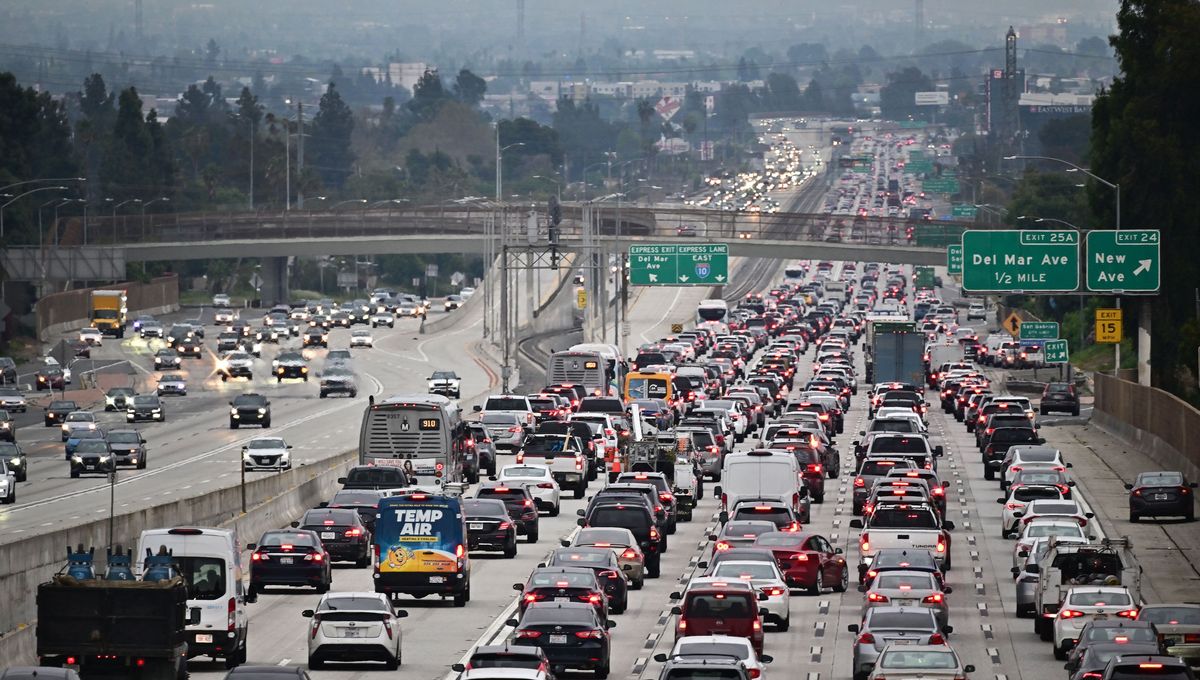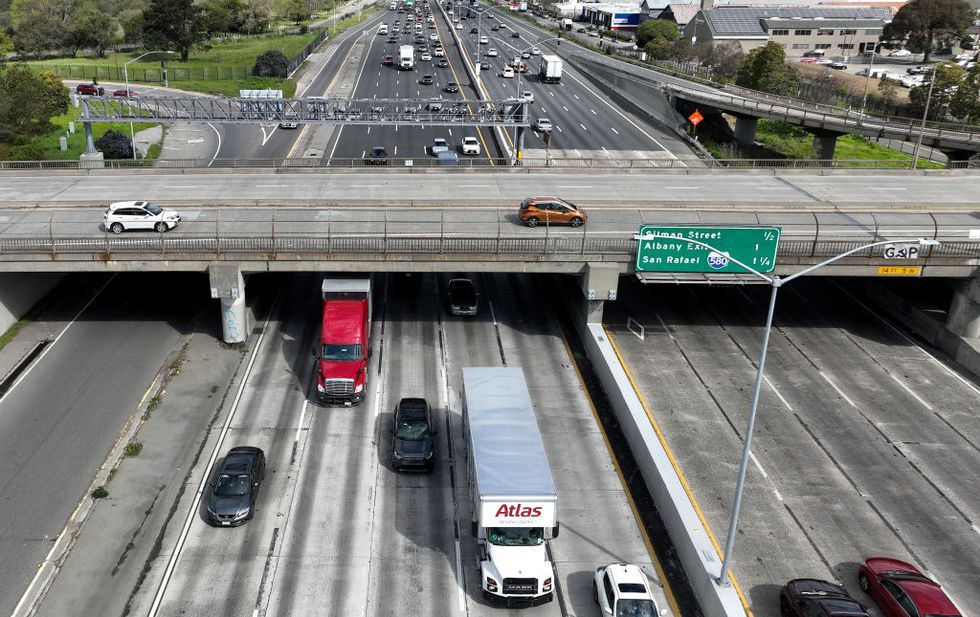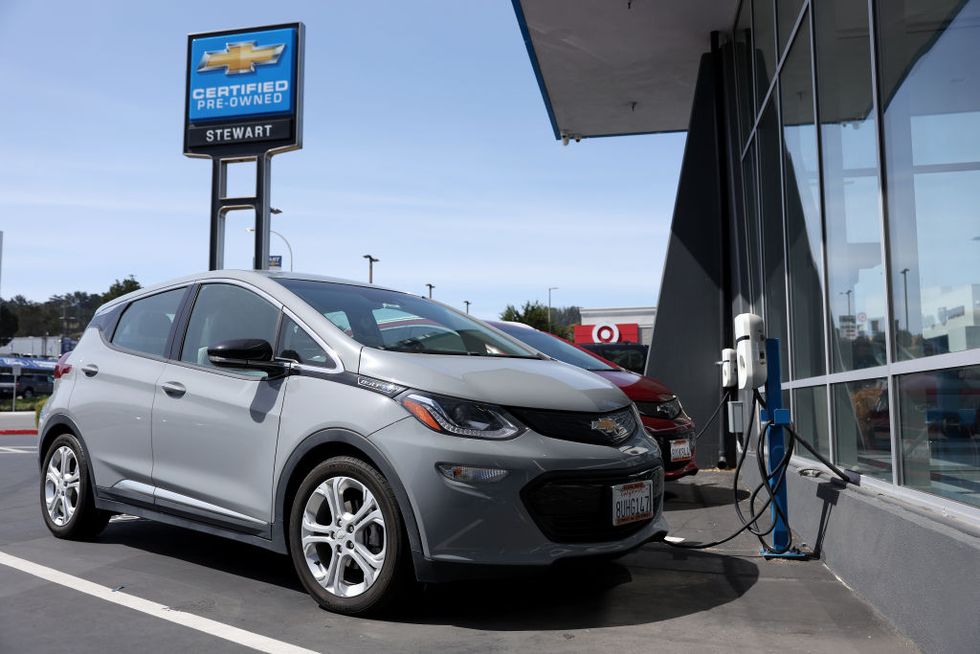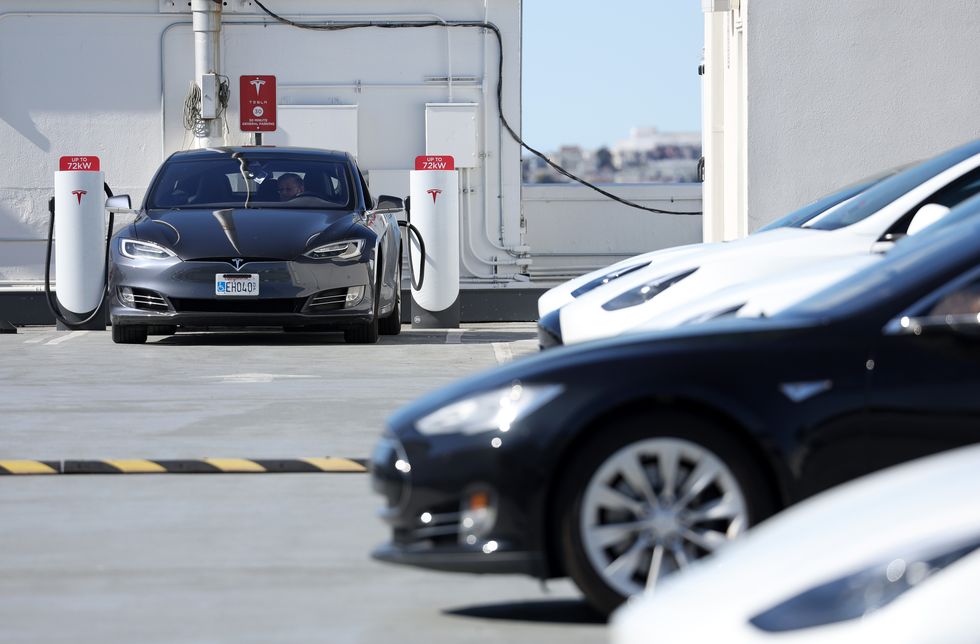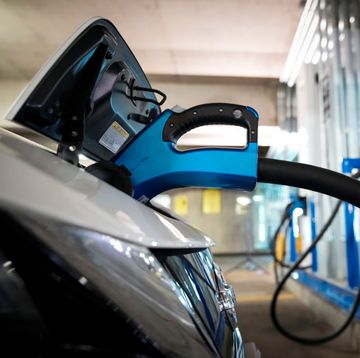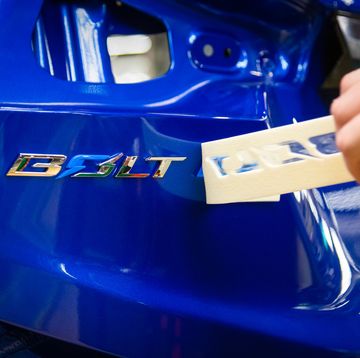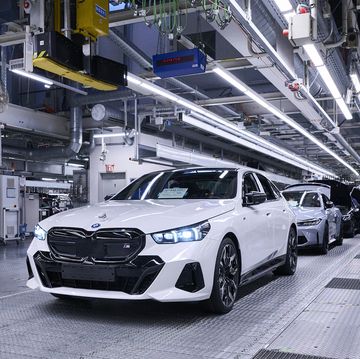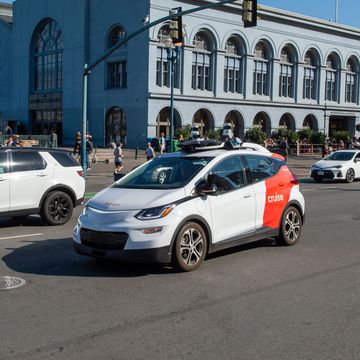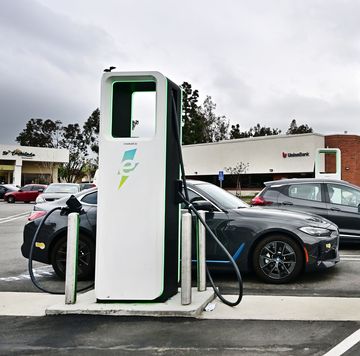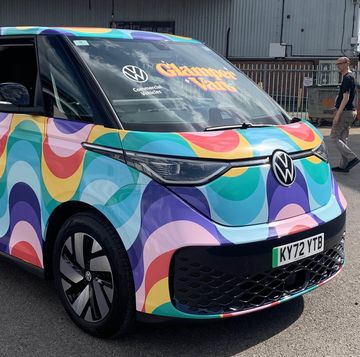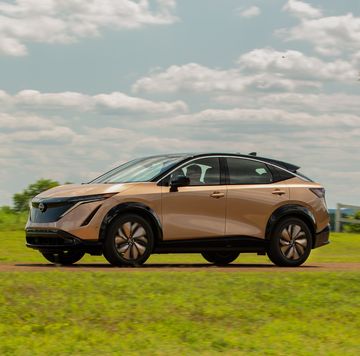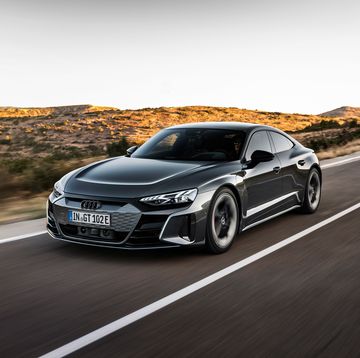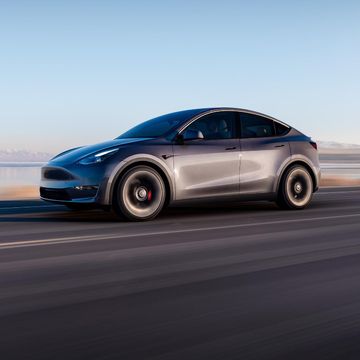- California has reached its first ZEV sales goal of 1.5 million units two years early, but is the state on track for 100% ZEV sales by 2035?
- Experts from California's Air Resource Board and UC Davis' PH&EV Research Center say this progress is encouraging, but fine-tuned incentives and millions of additional chargers will be essential.
- With 18 states adhering to the CARB ZEV plans, the Golden State will lead the way and provide a super-sized example for smaller market states like Vermont and New Mexico.
Exiting the Howard Hughes Parkway and making a 120-degree bend onto the 405, I didn't spend much time looking at the cars around me, even though our collective pace allowed for plenty of time to gander. In fact, it wasn't until later in that Los Angeles evening that I started to notice the trend. Piling in and out of various Lyfts, each one was a hybrid, with a series of beloved Toyota Priuses joined by one workhorse Toyota Camry Hybrid.
This is not a California coincidence but rather the result of decades-long investment into clean air regulations by the Golden State government. Headed up by the California Air Resources Board, the state has been studying, legislating, and influencing emissions policies throughout the nation since 1967, with the Environmental Protection Agency continually allowing California to set stricter-than-Federal standards for itself and other states to follow. The 21st-century culmination of this authority is so prevalent that you might not even know it's there, as 18 states currently adopt California's vehicle emissions standards, and the prevalence of good-faith systems like check engine lights and catalytic converters are owed to the agency as well.
Since the turn of the century, however, CARB has focused on electric vehicles, from mild hybrids to battery-electric big rigs. And the state of California actually reached a significant milestone just two weeks ago, with Governor Gavin Newsom announcing that 1.5 million zero-emissions vehicles (BEV, PHEV, FCEV) have been sold statewide. That volume of sales is momentous on its own, but it also marks an achievement of the state's zero-emissions sales goals—set out by former California Governor Jerry Brown in 2012—a whole two years ahead of schedule.
In order to get there, California has doled out around $2 million dollars in ZEV incentives, stemming from programs like the generalized credit Clean Cars 4 All initiative, a cash-for-gas-clunkers-style Clean Vehicle Rebate Project, and a low-income accessibility-focused Clean Vehicle Assistance Program. Indeed, these programs are mostly working as intended, with the count for ZEVs growing by more than 20,000 units in the weeks since Governor Newsom's announcement. All told ZEVs represent 21% of light-duty vehicle sales in California just this year, according to California's Energy Commission.
That's a positive indicator, no doubt, but California plans to be at 100% in just 12 years—at least according to the most recent set of goals from CARB, known as the Advanced Clean Cars II Regulations (ACC), which were adopted in August 2022. Within this regulatory web of EV durability requirements, environmental justice credit programs, and charging infrastructure mandates exists the current blueprint for fully electrified sales by 2035, charting out a linear sales goal growth for every year starting in 2026. Even though the clock hasn't officially started ticking yet, John Swanton, an Air Pollution Specialist and Communications Specialist at CARB, believes that current sales trends indicate these 2035 goals are generally within reach.
"We're at a very good place in the early stages of this. It is exciting that we're going from a few hundred vehicles and then a few thousand to having the numbers that we now have in California," Swanton said in an interview with Autoweek. "It took us 30 years to get to this point and we don't think it's going to take that much longer to move forward."
But it's not just the folks at CARB who see California's progress as on track. Dr. Gil Tal, director of the Plug-in Hybrid & Electric Vehicle Research Center at the University of California Davis, believes California is most certainly on track and could actually remain ahead of its sales schedule for some time, according to a co-authored analysis of the newest ACC regulations. Additionally, in contrast to Europe's tailpipe emissions regulation approach, Tal noted that sales requirements and aggressive performance standards are the most effective way to accelerate a ZEV transition.
"Right now it's kind of voluntary. All of these sales are not happening because of government regulations, but because there is a demand that the car companies are pushing," Tal explained in an interview with Autoweek. "New car buyers are of the higher income group in most populations and, before the new IRA, many of these cars were sold with very little incentives."
Referencing California's Energy Commission ZEV database confirms this claim, as PHEV versions of BMW's X5 and 3-series, Jeep's Wrangler 4xe, and the Polestar 2 battle it out for sales number pole positions behind Tesla and Chevy's Bolt lineup, all with little to no state incentive depending on the purchaser's income. Of the 1.5 million cumulative ZEVs sold in California, battery-electric models make up over a million units while PHEVs make up 457,000 or so. Tesla's Model 3 and Model Y represent around 42% of the 125,000 ZEVs sold so far this year. Fuel-cell electric vehicles make up only 15,432 units of total ZEV sales, unsurprisingly.
Sunny projections aside, there are significant challenges ahead, namely in accessibility and production capability. As Tal explained, most EV buyers are in higher tax brackets these days, but California's goals will eventually cover buyers from all backgrounds and income levels. And as the buyer's market goes from self-selecting to the general populous, revising incentives to target lower-income populations (who often face greater barriers to transit and good infrastructure) will be essential.
CARB's current ACC regulations address this issue by offering Environmental Justice Credits, discounts that automakers can receive by selling their cars at discounted rates to community ride-sharing services, selling new ZEVs at discounted rates, or producing ZEVs that fall below $20,275 for passenger cars. It's still unclear what the take rate of these credits will be, but Swanton says that CARB is hyper-focused on making electrified vehicles accessible to everyone.
"If you have more means, it's easier to accept the risk of a new technology. There's always a hesitancy to jump in, especially if you're absolutely dependent on a single vehicle or committing to a new vehicle purchase," Swanton said. "It's not only the environmental justice credits, but it's also the ZEV assurance measures that make sure there are warranties that people are used to and some standardization across the board, too."
The capability and durability standards laid out in the ACC regulations are relatively simple: 150 miles of range for BEVs, 30-50 miles of range for PHEVs, an average of 80% driving range retention at 10 years old, and no more than 25-30% battery degradation. CARB also mandates an eight-year or 100,000-mile battery warranty, which certainly puts pressure on automakers to produce quality vehicles.
And automakers should be indebted to produce competent, sightly electric vehicles, though actually getting production lines moving has been slow to start for EVs. Both Tal and Swanton agreed that the biggest hurdle in achieving California's goals will be production consistency, not buyer demand, given that 40% of ZEVs sold in the US are sold in California.
Naturally, an increase in both charging and hydrogen infrastructure will need to occur as well, with figures from UC Davis showing the highest necessary growth in single-family home and multi-family dwelling charging. From a numerical basis, analysis from UC Davis estimates that 15.6 million Level 2 chargers in single-family homes, 2.7 million in multi-unit dwellings, 1.6 million at commute destinations, and 3.7 million at public locations will be needed in California by 2035. In the 18 states that follow California's lead, around 3.2 million chargers will need to be dispersed across the Pacific Northwest, East Coast, Midwest, and South to accompany the concurrent growth. That's a total estimated infrastructure cost of around $55 billion.
Even so, these copycat states do give themselves and automakers some added flexibility. For one, automakers can use 15% of ZEV credits earned from 2012-2025 to fulfill their requirements starting in 2026. Additionally, CARB will allow excess credits earned to be applied to states where automakers are lagging behind, though it is proposing this carry-over practice be capped at 25% by 2026 and 5% by 2030 for each company in each state. However, the challenge of actually hitting 100% by 2035 is much higher for states like Vermont, Delaware, and New Mexico, which each make up less than 1% of annual US light-duty vehicle sales. For context, California accounts for 11% of annual US light-duty vehicle sales, or 1.67 million new registrations in 2022.
Going forward, the current ACC regulations will usher in the ZEV transition through 2035, more or less. Being a dynamic agency that acts on research and science does allow CARB some flexibility, and these rules and regulations will be updated as needed. Whether that's to abolish the range minimums to count metropolitan-focused Microlinos or expand incentives to two-wheel mobility devices, Swanton couldn't say. Nonetheless, given that the automotive industry is arguably in its teething era of electrification, it's almost certain that we'll see regular shifts in incentives checks, range rules, and credit enforcement to come.
Amidst all this talk about production timelines and infrastructure creation, it's also important to remember why California has such strict vehicle regulations in the first place—smog. While EVs are a huge step in the right direction for clean air, with studies showing that EV's overall carbon footprint is nullified the more you drive, Dr. Susan Handy of UC Davis' Department of Environmental Science and Policy is here to remind you that driving isn't always the answer. That is if the 26-lane I-5/405 merge wasn't enough.
"The progress on EVs is encouraging, but EVs alone won't get us to our targets. To meet California's goals for GHG emissions reductions, Californians are also going to have to drive a bit less," Handy explained in an interview with Autoweek. "This is because of the GHG emissions associated with manufacturing cars, whatever their fuel type, and with building and maintaining roads. It is not as hard as it sounds, as cities in California are already taking steps toward making it possible for their citizens to drive less. But the state will also have to stop trying to make driving easier, in other words, stop widening highways."
Do you live in a CARB-adhering state? Has it affected your car buying or maintaining experience? Please share your experiences below.
A New York transplant hailing from the Pacific Northwest, Emmet White has a passion for anything that goes: cars, bicycles, planes, and motorcycles. After learning to ride at 17, Emmet worked in the motorcycle industry before joining Autoweek in 2022. The woes of alternate side parking have kept his fleet moderate, with a 2014 Volkswagen Jetta GLI and a 2003 Honda Nighthawk 750 street parked in his South Brooklyn community.
